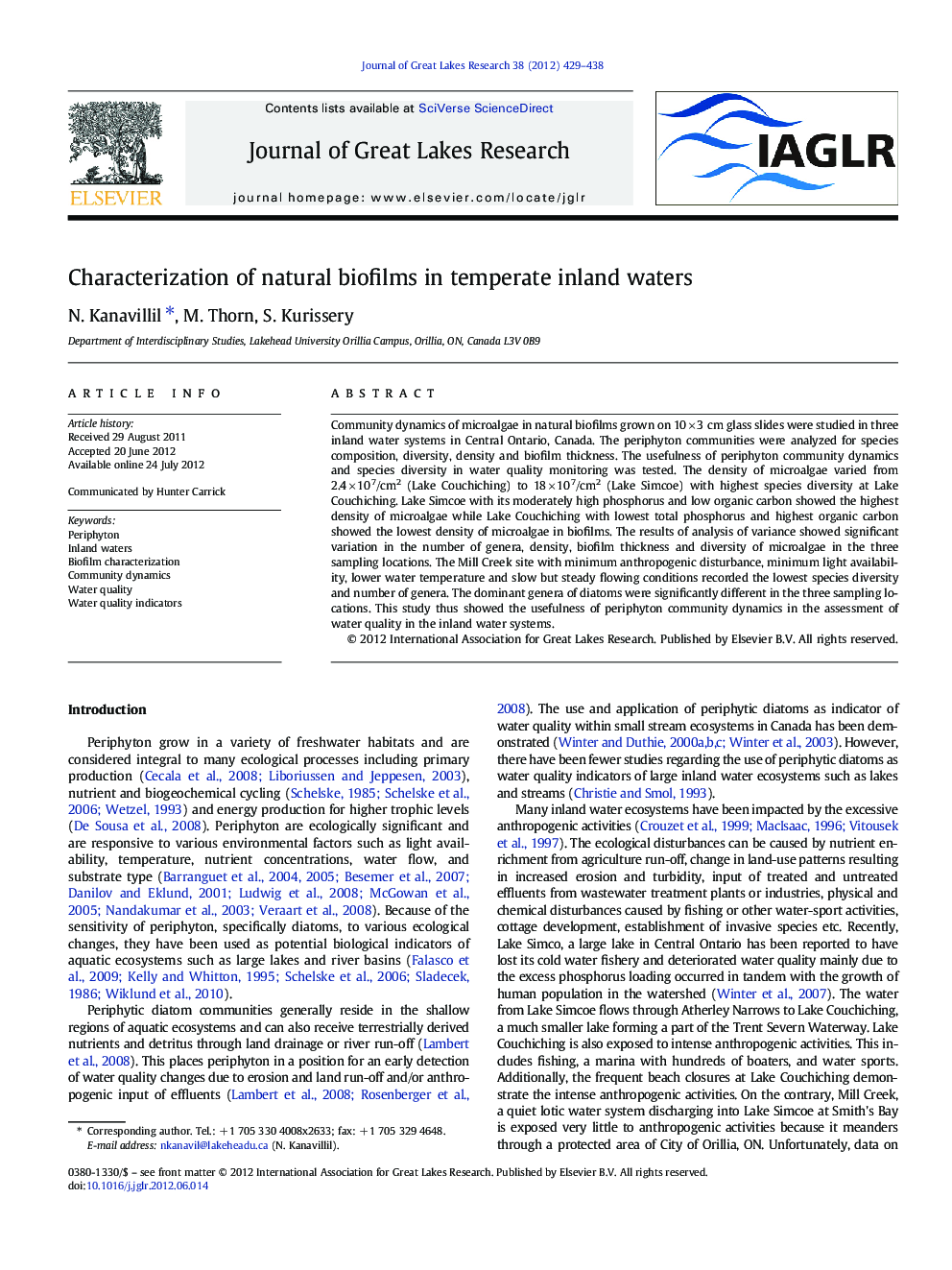| کد مقاله | کد نشریه | سال انتشار | مقاله انگلیسی | نسخه تمام متن |
|---|---|---|---|---|
| 4398353 | 1306687 | 2012 | 10 صفحه PDF | دانلود رایگان |

Community dynamics of microalgae in natural biofilms grown on 10 × 3 cm glass slides were studied in three inland water systems in Central Ontario, Canada. The periphyton communities were analyzed for species composition, diversity, density and biofilm thickness. The usefulness of periphyton community dynamics and species diversity in water quality monitoring was tested. The density of microalgae varied from 2.4 × 107/cm2 (Lake Couchiching) to 18 × 107/cm2 (Lake Simcoe) with highest species diversity at Lake Couchiching. Lake Simcoe with its moderately high phosphorus and low organic carbon showed the highest density of microalgae while Lake Couchiching with lowest total phosphorus and highest organic carbon showed the lowest density of microalgae in biofilms. The results of analysis of variance showed significant variation in the number of genera, density, biofilm thickness and diversity of microalgae in the three sampling locations. The Mill Creek site with minimum anthropogenic disturbance, minimum light availability, lower water temperature and slow but steady flowing conditions recorded the lowest species diversity and number of genera. The dominant genera of diatoms were significantly different in the three sampling locations. This study thus showed the usefulness of periphyton community dynamics in the assessment of water quality in the inland water systems.
► Significant variation in microalgal genera between ecosystems.
► Lake Couchiching with highest human activities showed highest species diversity.
► Lake Simcoe with high phosphorus concentration showed highest microalgal density.
► Mill Creek with lowest sunlight showed lowest microalgal diversity.
► The results indicate usefulness of periphyton as inland water quality indicator.
Journal: Journal of Great Lakes Research - Volume 38, Issue 3, September 2012, Pages 429–438